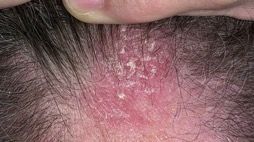SEBORRHEIC DERMATITIS
Seborrheic dermatitis is a common skin condition affecting millions of Americans. It shows up as reddish, flaky patches of skin. Common areas affected include the scalp, eyebrows, eyelids, nasolabial creases, lips, ears, armpits, umbilical area, and groin. Itching may be severe. It can be unsightly, itchy and, since it is often on the face, may cause embarrassment. It is not contagious, but usually a chronic condition.
Dr. Green Dermatology – Seborrheic DermatitisIn adult seborrheic dermatitis usually affects the scalp, eyebrows, ear canals, sides of the nose, and behind the ears. It sometimes affects the armpits, chest and in the groin area. Most people with it complain of dandruff, especially on the back and sides of the scalp (bad dandruff is usually seborrheic dermatitis).
Stress, fatigue, weather extremes, oily skin, and infrequent shampooing or skin cleaning make it worse. Severe medical illnesses, including AIDS, Parkinson’s disease, head injury, and stroke are associated with seborrheic dermatitis. However, the vast majority of people with seborrheic dermatitis have no associated conditions.
Seborrheic dermatitis may start in infancy as a cradle cap. It affects the scalp as thick, crusty, yellow scales. Children usually outgrow it by age 3 and do not normally get seborrheic dermatitis. Cradle cap is not contagious, it is not caused by poor hygiene, it is not an allergy, and it is not dangerous. Cradle cap usually does not itch, but it may. If excessive scratching occurs, it can cause additional inflammation, mild infections or bleeding.

Seborrheic Dermatitis Treatment
Many treatments exist to quickly improve the condition, ranging from medicated shampoos, Green Tea Cleansers, to the use of selenium sulfides, cortisone, antifungals, and a few other topical medications. A person may need to try several shampoos to find the one that works best and then rotate between several medicated and non-medicated shampoos to maintain effectiveness. It’s important to massage the shampoo and or cleansers onto the scalp and other affected areas and leave it in place for a few minutes before rinsing thoroughly. Other shampoo ingredients that are sometimes helpful are salicylic acid, coal tar, and sulfur. The quicker one seeks treatment, the quicker Dr. Green can help alleviate the condition.


